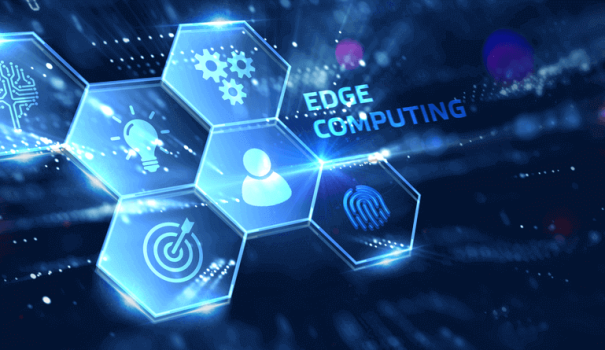K
Kathleen Martin
Guest
Edge computing is not just a methodology but also a philosophy of networking that is primarily focused on bringing computing devices closer to the network. The objective is to reduce any sort of latency in the usage of bandwidth. To put it in layman’s terms, edge computing means executing a smaller number of processes in the cloud and migrating those processes to a more localized environment such as a user’s computer, an IoT device, or an edge server. Executing this process ensures a reduction in long-distance communication that arises between the client and the server.
Network Edge
For all internet devices, a network edge is a place where the device or the local network that contains the device, communicates with the internet. One can call the word edge a buzzword and its interpretation is rather funny. For instance, the computer of a user or the processor inside an IoT device can be treated as a network edge device; however, the router used by the user, or the ISP is also factored as a network edge device. The point to be noted here is that edge of any network, from a proximity point of view is very close to the device; unlike other scenarios involving cloud servers.
Difference between edge computing and other computing models
Historically speaking, early days computers were large, bulky machines that could be accessed either via a terminal or directly. However, with the invention of personal computers, which was quite a dominant computing device for quite a long time, the methodology of computing was more in a distributed manner. Multiple applications were executed, and the data was either stored in the local computer or probably stored in an on-premise data center.
However, with cloud computing, we are seeing a paradigm shift in the way the computing process is done. It brings a significant value proposition where data is stored in a vendor-managed cloud data center or a collection of multiple data centers. Using cloud computing technology, users can access data from any part of the world, through the internet.
But the flip side is that because of the distance between the user and the server location, the question of latency may arise. Edge computing brings the user closer to the server location, making sure that the data does not have to travel a distance.
Continue reading: https://www.techfunnel.com/information-technology/edge-computing/
Network Edge
For all internet devices, a network edge is a place where the device or the local network that contains the device, communicates with the internet. One can call the word edge a buzzword and its interpretation is rather funny. For instance, the computer of a user or the processor inside an IoT device can be treated as a network edge device; however, the router used by the user, or the ISP is also factored as a network edge device. The point to be noted here is that edge of any network, from a proximity point of view is very close to the device; unlike other scenarios involving cloud servers.
Difference between edge computing and other computing models
Historically speaking, early days computers were large, bulky machines that could be accessed either via a terminal or directly. However, with the invention of personal computers, which was quite a dominant computing device for quite a long time, the methodology of computing was more in a distributed manner. Multiple applications were executed, and the data was either stored in the local computer or probably stored in an on-premise data center.
However, with cloud computing, we are seeing a paradigm shift in the way the computing process is done. It brings a significant value proposition where data is stored in a vendor-managed cloud data center or a collection of multiple data centers. Using cloud computing technology, users can access data from any part of the world, through the internet.
But the flip side is that because of the distance between the user and the server location, the question of latency may arise. Edge computing brings the user closer to the server location, making sure that the data does not have to travel a distance.
Continue reading: https://www.techfunnel.com/information-technology/edge-computing/

